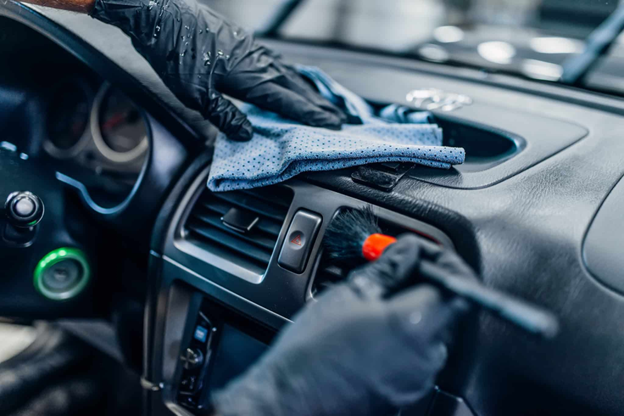People cycle for many reasons: for the health benefits, the enjoyment, and the convenience it provides in their daily routine. Bicycle riding can help prevent dangerous diseases like stroke, heart attack, depression, diabetes, obesity, and arthritis. It has also proven to be a time-efficient method of running day-to-day activities.
Overall, bicycle riding provides many benefits to those who partake in it. However, as the number of persons riding bicycles grows, so does the number of collisions. Fortunately, every rider can adhere to safety guidelines to protect themselves and others from harm. Those looking for detailed guidance can speak to experienced attorneys like personal injury lawyer David Benowitz. Meanwhile, this article will outline some of the essential rules bicyclists can follow to avoid accidents.
Safety Rules Bicyclists Should Know
Some of the safety rules bicyclists must follow to protect themselves and prevent harmful encounters with other vehicles on the road include:
1. Understanding and Employing Hand Signals
A lot of bicycle accidents happen at close intersections. As a result, it is critical that you fully understand different bicycle hand signals so that you can communicate with close motorists and bicyclists. If you do not give enough warning, a driver cannot predict what you will be doing.
Extend your left arm horizontally, out to the left, and angle your forearm downward as a hand signal for stopping. Extend the right arm perpendicular to the body when turning right and the left arm perpendicular to the body when turning left. Ensure that your hand signals are visible and apparent to others while maintaining the hand rule signal.
2. Avoid Sidewalks
Even the most experienced cyclists can become nervous when riding alongside vehicles that are driving at several times their speed. Although cycling on the sidewalk may appear to be a safe option, it is not. Sidewalk cycling is dangerous for multiple reasons.
Sidewalks belong to walkers, and bicycles can collide with walkers or lose control when the sidewalks are overcrowded. Additionally, sidewalk flooring is more likely to be bumpy than road paving, and bicyclists may encounter a bump-causing accident. Furthermore, motorists do not anticipate seeing a bicyclist cross the road from a sidewalk, which might catch motorists off guard and hit the bicyclist.
3. Constantly Wear Helmets
In most locations, the law requires children to wear helmets, but adult helmet rules vary. However, wearing a helmet is the safest option for children and adults. Even though not all regions compel bicyclists to wear a helmet, studies show that wearing one lowers the potential for injury by 70 percent.
The most common cause of fatal bicycle accidents is head injuries. Although a helmet cannot guarantee your survival, it will always give you a greater chance than riding bare-headed. The indication is that persons who ride their bicycles while wearing a helmet are substantially less likely to suffer severe injuries than those who do not.
4. Keep Yourself Visible
Limited visibility is a common contributor to bicycle accidents. It is harder for vehicles to avoid hitting you if they can’t see you. Using lighting and clothing to make yourself visible can help avoid accidents. Cycling at night or in poor lighting conditions requires the use of lights. The standard setup for lights in bicycles is having a white light in front and a red light in the back. Add more battery-powered or rechargeable lights or reflective strips to your bicycle frame or wheels for extra visibility in low-light conditions.
While adding lights on your bicycle can be helpful, wearing bright and reflective clothes is also crucial. Wearing bright and reflective clothes improves your visibility to other drivers and will go a long way in reducing the risk of a bicycle collision.
5. Ascertain that the Bicycle is in Good Condition
An inattentive driver or an unforeseen bump in the road is usually the most common cause of a bicycle collision, but mechanical problems also cause a substantial proportion of accidents. Checking your cycle before hitting the road can help you avoid any mechanical-related mishaps.
Ensure you inflate your tires to the correct pressure, make sure that your reflectors and lights are in good working condition, and examine your chains and gears for any flaws, fractures, or other faults.
6. Adhere to All Traffic Laws and Signals
Bicyclists must observe the same traffic rules as motorists as long as they share the road with them. They should follow traffic rules, including stopping at stop signs and red signal lights and obeying the fundamental right-of-way rules (riding on the right-hand side of the road with the traffic flow).
7. Keep Hands on the Handlebars and Avoid Distractions
Riding hands-free is exceedingly risky, especially when sharing the road with other vehicles. It will take you much longer to react to unexpected incidents, such as a walker in your path or trash in the road, if your hands are not on the handlebars. With hands off the handlebars, it may be difficult for the cyclist to apply the brake in time, and they will be more likely to fall off or cause an accident.
Distracted driving is another common contributor to deadly car accidents. Maintaining your focus on the road and being aware of your surroundings will help you stay safe. When cycling, people should avoid using phones or listening to music as these can prevent them from hearing what is happening around them.
8. Avoid Close Encounters with both Moving and Parked Vehicles
Avoiding close encounters with moving vehicles is almost as crucial as avoiding close encounters with parked vehicles. Many bicyclists get “doored” in such situations, which occurs when a driver in a parked vehicle swings their door open into the road or a bicycle lane without first looking to see whether there is a rider present.
Typically, being “doored” results in knocking bicyclists off their bikes or causing them to veer into traffic violently. Therefore, it is advisable to ride a few feet away from parallel parked cars and constantly watch windows and mirrors to see whether there is someone in the vehicle who could pose a problem.
What To Do When a Bicycle Accident Occurs
Accidents can happen even if bicyclists follow all safety guidelines. When they do, the first thing you should do is seek medical help right away. You are entitled to compensation for injuries and any property losses if the cause of the accident is someone else’s negligence.
If you need help after a bicycle accident, contact a reputable lawyer who specializes in bicycle injury claims. The lawyer will provide you with legal counsel and help you get your necessary compensation.
Final Thoughts
Bicyclists must adhere to safety rules to make cycling safer for themselves and motorists. However, the drivers of the vehicles with whom they share the roads also have a role to play in ensuring everyone’s safety. Motorists should also be aware of cyclists, especially where bicycle lanes are not designated. They should always look around before turning, changing lanes, or entering an intersection to ensure safety on the roads for themselves and others.







